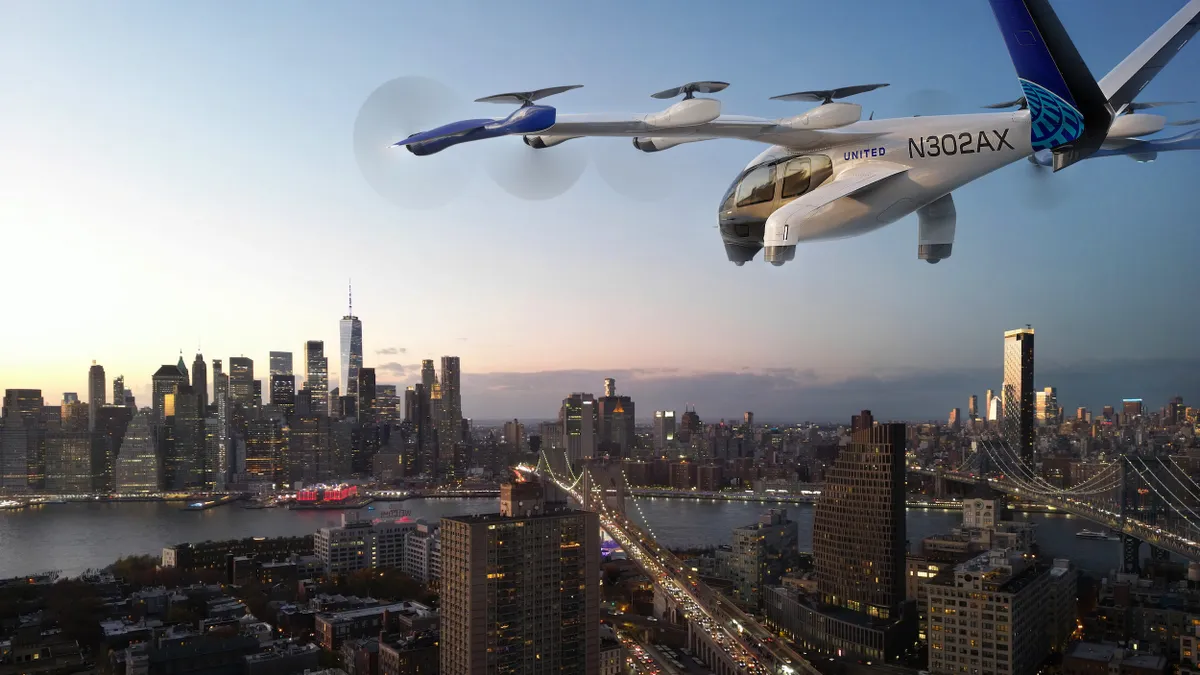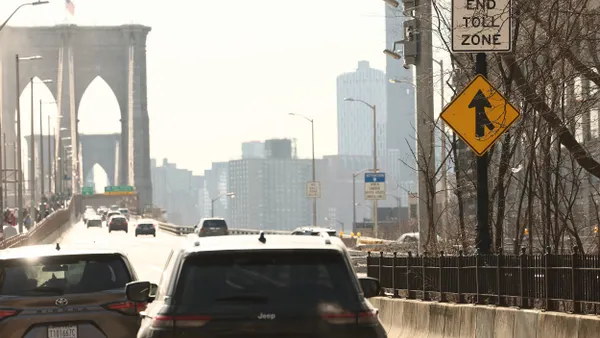As the dockless bike and e-scooter trend rapidly spreads across the country, cities are increasingly trying to figure out the best ways to manage the devices. While dockless vehicles represent a visible reminder of the public desire for alternative urban mobility options, municipal leaders sometimes find themselves in a pickle trying to fulfill those desires with limited resources.
"There's a demand for people to utilize new mobility options … [but] we’ve realized that the public sector can't do it on its own," Los Angeles Department of Transportation (LADOT) Chief Sustainability Officer Marcel Porras told Smart Cities Dive.
In September, Los Angeles launched a year-long dockless device pilot and instated new regulations for the program. But earlier last year it unveiled a key tool to assist with the governance: the Mobility Data Specification (MDS). MDS is a data and API standard that allows the city to gather, analyze and compare real-time data from mobility-as-a-service (MaaS) companies. The specification also serves as a measurement tool that eases municipalities’ ability to enforce regulations.
"First and foremost, it’s about managing our right-of-way," Porras said. The real-time data sharing lets city employees quickly see if, for example, MaaS providers are keeping within their allotment of devices. It can also show where the bikes and scooters are located to meet equity goals. "That's a big question for cities, how do we equitably distribute resources?” Porras said.
Although city employees could input the requested data, that’s an onerous task that needs constant updating to be effective. It’s far more efficient to have MaaS providers enter their standardized data into a system that can share it with the city nearly instantly. "We can no longer simply rely on those analog tools we have for so long. We have to create a digital set of management tools, which we think MDS provides the foundation for,” Porras said.
Dockless devices were the impetus for developing MDS, but it can be expanded to other private mobility areas such as car-sharing. Even drones present an area of opportunity with MDS. “If it gets to the point where policymakers want to do that, then we’re going to need to know where those vehicles are in real time,” Porras said.
MDS also allows for two-way communication exchanges between the city and service providers because it consists of a "provider API" and "agency API."
“We're getting to a point where this is a conversation about the city communicating to scooters and cars and taxis and ride-hailing services the rules of the right of way, what they can and cannot do. That becomes really exciting when you think about who gets access to the curb and creating dynamic infrastructure and dynamic capacity," Porras said.
Bigger than L.A.
Although Los Angeles developed MDS, "it's not the ‘Los Angeles data specification,’ it's a tool that we've developed, a concept we developed, that needs to scale," Porras said. The city released MDS publicly on Github as a standard that others can adopt.
The scalability includes the benefit of having a common governance tool across neighboring municipalities. Santa Monica has been one of the key proponents of implementing MDS. “For projects to succeed, we need to replicate it and it needs to be able to function across local boundaries. L.A. is one of 88 cities in our county … and it’s important to understand at a regional level what is happening,” Porras said.
MDS isn't remaining confined to the Los Angeles area. Cities across the country have entered conversations with L.A. leaders about using MDS, which L.A. welcomes and encourages. MDS was a topic of discussion at a Transportation for America Smart Cities Collaborative meeting in December, where MaaS growth and increasing municipal appetites for data also were prime topics. The collaborative aims to bring cities together to share ideas and push for standardization with approaches that work.
"That’s the beauty of MDS, it starts to pull all these parties together around a similar understanding of what to report and what’s important to report," Russ Brooks, Director of Smart Cities at Transportation for America, told Smart Cities Dive. “There aren't a lot of cities that have the same capacity and capability that Los Angeles does ... But when L.A. develops a tool like this one, a city like Minneapolis doesn't have to reinvent the wheel.”
Cities achieve the greatest success when they “learn from and build on each other,” rather than starting from scratch when devising their own complex projects, he said. "MDS is a good example of that. Cities have been trying to figure out data standards and specifications for new mobility services for quite a while."
Scalability and the future
MDS scalability extends beyond location and reaches to applications as well. "L.A. has figured something out and it’s still in its very earliest ideation and iteration,” but a standard like MDS "absolutely could be translated to a number of different industries,” Brooks said. “It’s really just a question of the cities taking it upon themselves and using their authority to require it.”
For example, cities could use a data standard to request and track private entities’ environmental or housing information. But starting with dockless device data and expanding into other areas seems natural considering “mobility data is one of the things that has really taken off … and it also requires real-time enforcement,” Brooks said.
LADOT has started to gather some of the data it had hoped for but recognizes that like any project, there is a ramp-up period and MDS will need ongoing attention and resources. Still, it’s widely viewed as a success in engaging the private sector and fostering a better relationship to ultimately improve city services for the public.
"In order to engage the private sector we have to understand how the private sector works and be willing to be partners, not just finger wagging," Porras said.




















